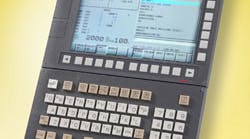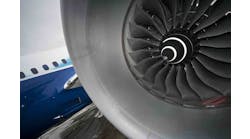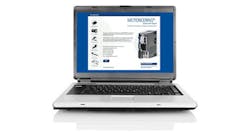New High-Speed Controls for Laser Processing
The Series 30i/31i-L Model B Laser control has update rates of 125 microseconds, “arguably 40 times faster than the rate at which a single neuron can fire within the human brain,” according to FANUC.
FANUC Factory Automation America’s Series 30i/31i-L Model B high-speed laser controls support advanced levels of high-speed laser processing, and achieve “seamless choreography” between axes motion and power modulation, even in cases of extremely high speeds when processing thin gage materials. The new device’s internal laser power stabilizing characteristics deliver edge conditions on thicker materials that redefine the norm of RZ and RA (measured length of surface roughness). A novel feature for laser processing is that it will quantify “smoothness” on edge cross-sections rather than surface roughness.
FANUC manufactures factory automation (FA), robots, and ‘robomachines,’ and has been a pioneering developer of CNC equipment over several decades. FANUC Factory Automation America supplies CNC systems, including control systems, a complete range of drives and motors and CO2 laser solutions. It also offers engineering support, parts, repair and factory automation solutions and training programs to machine tool builders, dealers and users.
The new Series 30i/31i-L Model B CNC laser controls provide high performance, advanced technology, and impressive gains in processing speeds and power modulation, which translate into shorter cycle times and increased edge quality.
Relative to comparable CNCs, FANUC reports that the Series 30i/31i-L Model B Laser control has update rates of 125 microseconds, “arguably 40 times faster than the rate at which a single neuron can fire within the human brain.” These technological features result in improved cut quality and accuracy, which leads to premium quality parts and a realized competitive distinction.
In line with other new FANUC CNCs offerings, the Series 30i/31i-L Model B provides up to 8 MB of high-capacity, non-volatile internal memory that is available to store constant inventory nests, which need not require network access to activate and run during surplus machine availability. External interaction via ATA or Compact Flash memory cards add an additional 2 GB of part program storage. Added flexibility includes a USB port, where any commercially available USB storage device may also be connected to store and transfer large programs.
For increased processing capability, a fast data server can be installed in the CNC, to provide up to 4 GB of flash memory and a 100-GBit Ethernet connection. A high-speed, fiber-optic connection between the CNC and an integrated PC front-end allows the hard disk be used for part program storage. The Series 30i/31i-L Model B CNCs has an embedded Ethernet interface, allowing the user to integrate the CNC control system into a company network for data collection or for high-speed part program transfers. Worldwide links can be set up via the Internet making remote diagnosis, maintenance and online training possible. Because the integrated Ethernet interface does not use a public operating system, it is practically "hacker-free" and immune to viruses, providing a safe and worry free connection to business networks.
Minimal training and programming are needed with the new Series 30i/31i-L Model B CNCs for operators that already use FANUC controls. Upward compatibility is guaranteed and older part programs will run smoothly on the new controls. The Series 30i/31i-L Model B CNCs for laser cutting can be combined with rugged, energy efficient, high-performance servo drive systems that are specifically designed to deliver the industry's leading reliability and performance - even in dusty, high-vibration environments of the most challenging fabricating shops.
Laser systems with FANUC technology benefit from FANUC's reliability and energy efficiency, increasing their productivity. The laser control series also has dual energy savings settings that interpret short-term and long-term beam off times and adjust the laser current and energy consumption accordingly, once cutting resumes, the laser quickly engages full production. Power-save features result in reduced energy costs without a loss in part production and part quality.






